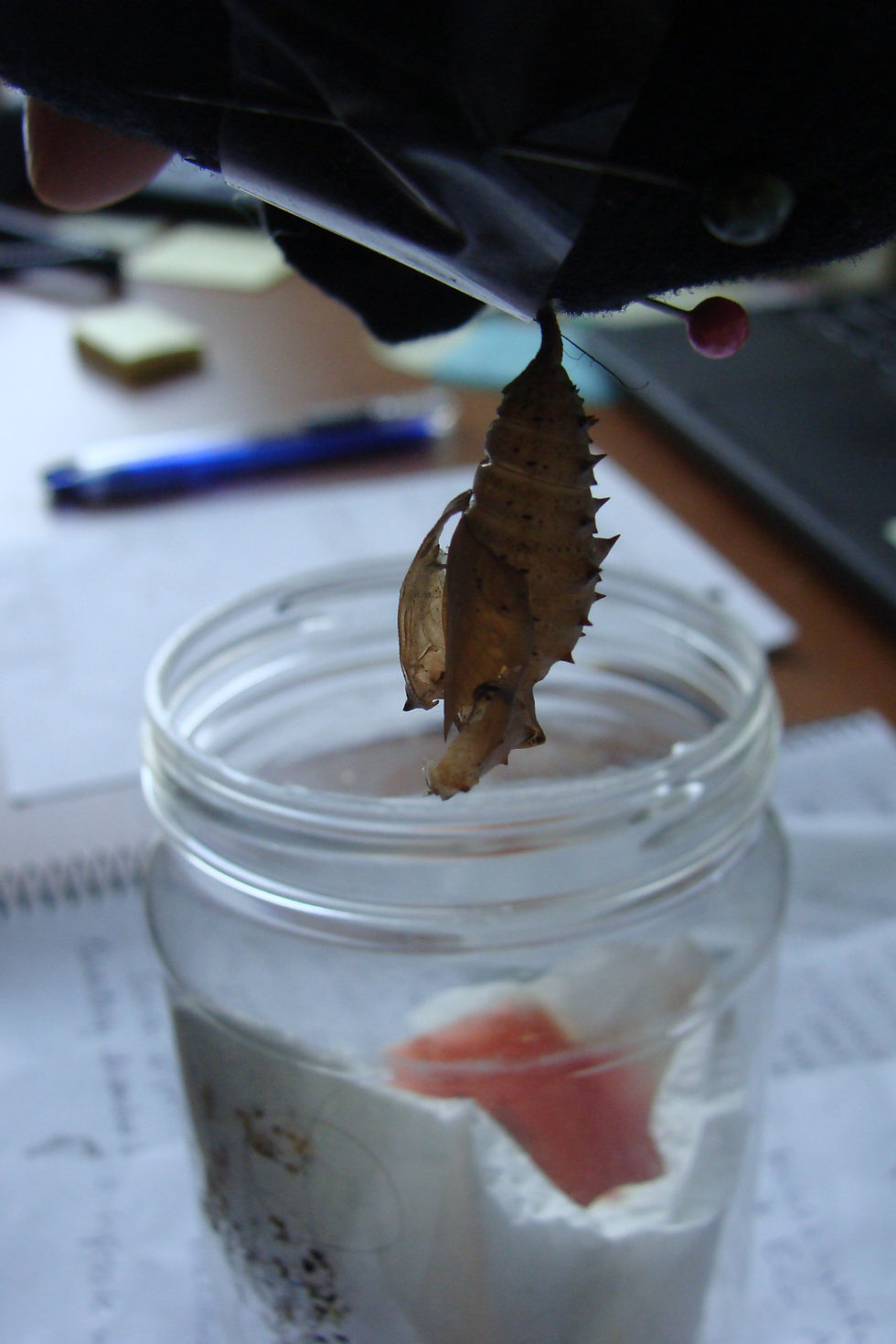Mourning Cloak
- Dawn Dextraze
- May 1, 2022
- 1 min read

Last fall, I found a brown, spiky chrysalis attached to a wheelbarrow in the community garden. It was hanging of the inside edge and it was blending in spectacularly with the brush I was pulling out of my perennial pollinator garden. I almost didn't notice it.
I decided to take it home and find out what kind of butterfly it belonged to. Because I'm a butterfly aficionado, I always have empty peanut butter containers with nylon wrapped around them with a few sewing pins stuck in the nylon. This allows me to pin the top of a chrysalis to the nylon and let it hang safely in the peanut butter jar. I keep the lid loose so air can flow through, but the adult cannot fly away until I see what it is.
I didn't have to wait very many days for the butterfly to emerge from the chrysalis. When it did, it was a shiny blackish brown color with bluish dots along golden margins (edges). When the wings were closed, they looked a bit like dry leaves. I kept the butterfly in the jar for a few hours to make sure the wings were dry before releasing it. I usually release butterflies on a flower, but being late fall, there were none blooming nearby, so I sliced up an orange and placed the butterfly on it.

Mourning Cloaks usually overwinter as adults, tucked in between layers of bark. Their body functions slow down and they go into a state of diapause. When they emerge, they drink sap from trees and rotting fruit. They are some of the first butterflies you will see each spring.










































Comments